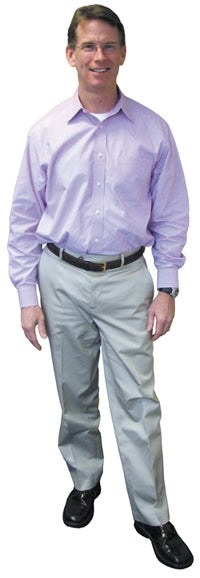Boxborough-based Lightower Fiber Networks may not be a household name, but it should be. The company, which was spun off from National Grid in 2007, owns a fiber optic cable network that extends from Boston to New York, including New York City and Albany. The company has more than 120 employees in three offices in New England. Its CEO, Rob Shanahan, joined the company in February 2008. He previously found great success in the telecommunications sector, helping to build Marlborough-based Conversent Communications until it was acquired as part of a roll up of several telecom firms into what is now known as One Communications. Here, Shanahan talks about why he returned to the telecommunications field and how Lightower has fared in the recession.
What brought you to Lightower?
After we sold Conversent, I decided to take some time off. So, I did some consulting work, my wife and I had our first child, and I tore my house down and built a new one. I was looking to get back into the business fairly soon. I don’t idle very well. I’ve known the M/C Venture guys, the firm based in Boston that invested in Lightower. When this opportunity came along it was a perfect fit for both of us and I was ready to jump back in.
Is the fiber network in New England built out or is there still uncharted territory?
There still is uncharted territory. We look at our network and then we look a couple miles off of the backbone and we think we can cost effectively build out. Every year we budget for expansion, so this year we have 5 expansion routes, which we’ll be announcing in January. Those new routes will take us to completely new markets that will connect back to the core network.
Who are Lightower’s customers?
We sell service to other carriers like AT&T and Verizon Wireless. All the major telecommunications carriers buy our fiber network to use for their network. We also sell direct to universities, financial institutions, hospitals, companies that are much larger that require significant amounts of bandwidth capacity.
So on the one hand you’re working with Verizon and on the other hand you’re competing with them. How does that work?
Yes, that’s a tricky one. We have a carrier group and a retail group and we keep them separate. We may get a request for service to a customer from a carrier and we can’t let somebody in the retail group know that this request has come in because someone on the retail side may be working on the same opportunity. There has to be a separation between wholesale and retail so that our wholesale customers continue to feel comfortable coming to us for service.
How does New England stack up in terms of its fiber network compared to other parts of the United States?
New England is tough to build in. And I know a lot of our Congressmen here in Massachusetts are asking us how can they can help us build more efficiently and more quickly. The more support we can get from our state representatives and politicians that can help create standards to make it easier for us to build in public right aways and get our approvals, the quicker we can build. The United States is behind the rest of the world in broadband deployment because it is so difficult and expensive to build fiber network.
What impact has the recession had on Lightower?
Even in the darkest days we have been able to grow the business and grow it quite profitably. Our revenues have grown 21 percent. We’ve had a very good mix of continuing to sell and expand while also controlling costs to improve upon the profitability of the company.
Do you think this industry is more immune from the overall economic pressure?
I won’t go as far as to say we’re in a recession proof business but we’re recession resilient. We also made the right decisions about where to expand and where to spend our money.

